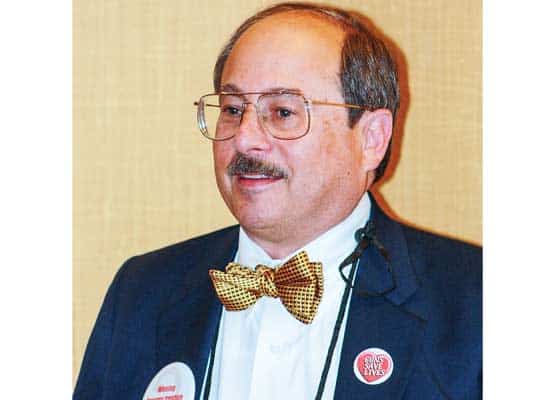Guns | Handguns |
2
By Massad Ayoob
Nearly a decade after his passing, the footprints of Lt. Col. Jeff Cooper, USMC (ret.) remain clearly visible in the ground of modern handgunning. I was recently re-reading The Complete Book of Shooting, by Jack O’Connor, published by Outdoor Life in 1965. O’Connor, a specialist in the rifle and a great master thereof, wisely subbed the section on handguns to Col. Cooper. Jeff’s work was to go well beyond the techniques he demonstrated in the O’Connor book, but 50 years on, much of what he wrote in ’65 remains solid.
Called by some “The High Priest of The .45,” Cooper was largely responsible for the renaissance of the 1911 pistol, which is still going strong. For O’Connor’s book he wrote “…there is never ‘enough’ stopping power. Men have been hit with more lethal missiles than can be fired from a pistol and still kept their feet.”
Thanks to the new breed of micro-pistols, the .380 ACP cartridge is more popular today than ever. Cooper wrote of the .380, “This is an attempt to produce a cartridge for a light, low-pressure, blow-back auto that still has some modicum of stopping power. Its 95-grain bullet at 950 fps is quite a bit superior in this regard to a .32 auto, and nearly any pistol which may be had in .32 ACP is also available in the .380. The Shooting Associates’ expanding bullet for this cartridge weighs 100 grains and moves at 925 foot-seconds. If one simply had to have a minimum pistol for purposes of concealment, a .380 with this load might do. I wouldn’t stake my own life on it, but then I don’t ride on bald tires either, while many do.”
Half a century later, I find those words hard to argue with. Today’s loads of choice for .380 are much as Cooper described: the Hornady XTP 90-grain JHP at 1,000 fps, or the Remington Golden Saber 102-grain at 940 fps.
On holsters, Jeff remarked: “In a good holster the triggerguard is completely covered, both to prevent leg shots and to develop proper drawing habits. Likewise a good holster allows the rest of the hand to slide into its firing position before the pistol starts to move, yet nine out of ten designs require the pistol to be well underway before a proper grip may be taken.” That’s still good advice, and today there are many more good holsters available than when Jeff wrote those words.
Pistolcraft pioneers included (from left): Ray Chapman, Elden Carl, Thell Reed,
Jeff Cooper and Jack Weaver. And, yes, the guns are loaded! Photo courtesy Lindy Wisdom.
As to using the holster, he wrote: “The technique of the draw must depend upon the holster, and also upon the type of weapon. The single-action revolver must be cocked, the auto pistol must be unlocked, and the double-action revolver must be timed so that its action cycle fits smoothly between leather and line-up. No one weapon type is inherently faster than the others, since the movements of the weapon from its holster into a firing position takes longer than the operation of its action.” Though he didn’t use the term, Cooper seemed to be describing “trigger prep” in which trigger manipulation begins before the pistol is on target, a technique that would be seen as cutting edge in the latter 20th century, and debated today for serious work.
On drawing from a hip holster, Jeff commented in the O’Connor book, “…the hand comes in on a single-action revolver from in front, on a double-action revolver from the side, and on an auto from above and behind.” The words were a reflection of the times. Draw from concealment was not part of Cooper’s famous experimental matches. At the school that Jeff founded, Gunsite, ably run today by his successor Buzz Mills, the hand coming straight down on the gun was the doctrinal draw when last I was there, and that has kept up with the times.
Opposite that holster, of course, is the magazine pouch. On spare ammo Jeff remarked, “The first line of a traditional song of Jalisco goes, ‘Traigo mi cuarenta y cinco, con su cuatro cargadores.’ ‘I carry my .45, with its four magazines.’ Every time I was ever with Jeff, he had his trademark 1911 .45 (or, for a time, the 10mm Bren Ten he inspired) cocked and locked on his right hip, usually in a Milt Sparks Yaqui Slide holster, and a single magazine of spare ammo in a pouch on his left hip, carried upright with bullet noses forward.
Jeff Cooper’s work has stood the test of time. Some of the equipment and some of the techniques he favored have been somewhat superseded by newer developments, but that doesn’t make either the 1911 .45 or the Weaver stance any less efficient than they were in Jeff’s time. Colonel Cooper’s groundbreaking research and advice remain strongly woven in the accepted doctrines of modern defensive handgunning.
Download A PDF Of The GUNS Magazine November 2015 Issue Now!


